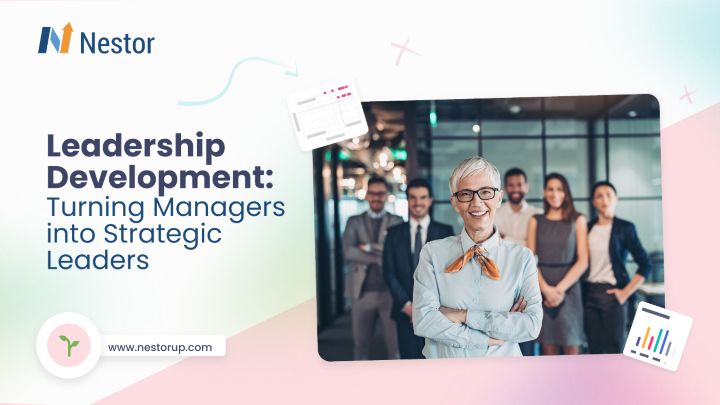
Navigating the realm of talent acquisition can often seem like embarking on a daunting journey filled with challenges and uncertainties. As a business owner or organizational leader, you probably understand the critical role that skilled and talented individuals play in driving growth, innovation, and competitiveness.
Recruitment, particularly in its external form, demands meticulous planning and entails a significant investment of time, resources, and effort. From crafting compelling job postings to conducting extensive interviews and assessments, the process can be both labor-intensive and costly. Moreover, the stakes are high, as the quality of talent ultimately determines the trajectory of the organization and its ability to achieve strategic objectives.
Thankfully, in the midst of the challenges posed by recruiting, there’s a smart solution that can make the process smoother, save you money, and boost productivity: the talent pool. It represents more than just a collection of resumes or LinkedIn profiles; it’s a proactive approach to talent acquisition, a strategic investment in the future of your organization. But what sets talent pools apart from traditional recruitment methods and how can you make the most out of them?
Understanding Talent Pools, A Strategic Advantage for Organizations
Talent pools are a thoughtfully selected group of individuals who possess specific skills, experiences, and potential that aligns with the organization’s objectives and future needs. Unlike traditional recruitment methods that rely heavily on external sources to fill vacancies reactively, talent pools take a proactive approach by cultivating a pool of potential candidates who may be already familiar with the organization’s values and objectives and posses the skills the company needs.
By nurturing relationships with these individuals over time, organizations can streamline their recruitment process, reduce time-to-hire, and minimize the costs associated with external recruitment efforts.
On the other hand, an internal talent pool specifically pertains to the pool of individuals within the organization itself who have been identified as possessing the desired skills, experiences, and potential to contribute to the organization’s success in the future. These internal talent pools are carefully curated and nurtured to facilitate internal mobility, succession planning, and talent development initiatives within the organization.
Improving Talent Pools Through Skill-Based Searches
By focusing on skills rather than solely on qualifications or educational background, organizations can significantly broaden their talent pools and access a more diverse array of candidates. This approach acknowledges that skills are often more indicative of an individual’s ability to perform a job effectively and adapt to changing organizational needs than their formal credentials.
Emphasizing skills-based criteria in talent acquisition not only enriches the talent pool but also enhances talent mobility within the organization. By identifying individuals with transferable skills and providing opportunities for skill development and advancement, organizations can empower employees to explore new roles and career pathways within the organization.
Furthermore, by identifying high-potential individuals and providing them with targeted development opportunities, organizations can groom future leaders from within, ensuring continuity and stability in key positions.
Why are talent pools important?
Talent pools are essential components of modern workforce strategies for several compelling reasons. First and foremost, they provide organizations with a proactive approach to talent acquisition, enabling them to cultivate relationships with potential candidates over time. They also contribute to cost efficiency by reducing reliance on external recruiting methods and they play a critical role in succession planning, particularly for leadership positions.
Additionally, talent pools foster a sense of engagement and loyalty among employees. When individuals see opportunities for career advancement and development within the organization, they are more likely to remain committed and motivated.
Quick Access to Talent:
Companies often find themselves needing to fill critical roles quickly due to sudden resignations, unexpected spikes in workload, or new projects requiring specialized skills. In such moments, the ability to tap into a pre-existing talent pool can be a game-changer.
Maintaining a talent pool allows organizations to quickly access qualified candidates when positions become available, reducing time-to-hire and ensuring continuity in operations. For example, a key position in your company suddenly opens up. Instead of scrambling to find a replacement, you dive into your talent pool and pull out a handful of qualified candidates who are ready to hit the ground running. This saves you valuable time and keeps your operations running smoothly without skipping a beat.
Cost Efficiency:
We all know that hiring can be expensive, especially when you factor in advertising costs, agency fees, and the time spent by HR personnel. In fact, the Society for Human Resource Management (SHRM) estimates that the cost per hire can range from 30% to 50% of an employee’s annual salary.
Now, consider the impact of these costs on your bottom line. For a mid-level position with a salary of $50,000, the cost of hiring could range from $15,000 to $25,000. And that’s just for one hire. For companies with multiple open positions or high turnover rates, these expenses can quickly add up, putting a significant strain on financial resources.
However, talent pools offer a cost-effective solution to this challenge. By proactively building relationships with potential candidates and reducing reliance on external recruiting methods, talent pools can lead to cost savings associated with recruitment and onboarding processes.
Succession Planning:
Every organization needs a plan for the future, especially when it comes to leadership roles. Talent pools play a crucial role in succession planning by identifying and grooming internal talent for future leadership positions. This ensures that there’s a smooth transition when key leaders move on and helps maintain stability within the organization.
Consider a situation in which a senior leader, pivotal in shaping the company’s growth and strategic vision, announces their retirement. In the absence of a well-defined succession strategy, the abrupt exit of such a key figure may cause a great deal of confusion and turmoil within the organization. Essential projects might grind to a halt, stakeholders may question the company’s stability, and employee morale could suffer a significant blow.
This is precisely where talent pools come into play. Through a methodical approach to identifying individuals with high potential and offering them avenues for professional advancement, businesses can cultivate a pool of future leaders prepared to take on pivotal positions when needed.
Enhance agility:
Talent pools allow organizations to adapt quickly to changing needs and market conditions by having a pool of flexible, skilled workers at their disposal. Whether it’s scaling up during busy periods or pivoting in response to industry trends, having a talent pool gives you the flexibility to navigate whatever comes your way.
According to a survey conducted by Gartner, a staggering 63% of HR leaders have already integrated agile methodologies into their HR functions, reflecting a widespread recognition of agility’s importance. This trend reflects a broader organizational embrace of agile methodologies, with many HR leaders citing its effectiveness in enhancing overall organizational performance.
Creating Effective Talent Pools
Crafting a talent pool that truly delivers requires more than just a series of actions—it demands a thoughtful and strategic approach. Here’s a detailed roadmap for organizations looking to establish and maintain effective talent pools:
Define Scope: To begin, it’s essential to clearly define the scope and objectives of the talent pool for its success. Organizations should identify the specific roles, skills, and competencies they aim to address through the talent pool. Additionally, they should determine the sources from which candidates will be drawn, whether internal or external.
Evaluate Workforce Skills: Building an effective talent pool begins with a comprehensive evaluation of your existing workforce’s skills. This evaluation goes beyond simply listing out the qualifications and experiences of your employees; it involves a deep dive into their strengths, weaknesses, and areas for growth.
Before you can identify potential candidates for your talent pool, you need to have a clear picture of the skills that already exist within your organization. This means taking stock of everything from technical abilities to soft skills like communication and leadership. By understanding the current skill landscape, you can identify areas where your team excels and areas where there may be gaps or room for improvement.
A study by PwC found that 79% of CEOs are concerned about the availability of key skills in their workforce. By evaluating workforce skills, organizations can proactively address skill shortages and build a talent pool that is well-equipped to meet future challenges.
Identify the Right People Based on Skills: Utilize data-driven approaches to identify individuals with the right skills and competencies for inclusion in the talent pool. The internal databases contains a wealth of information about employees’ skills, experiences, and performance history. By mining these databases, organizations can identify individuals who demonstrate the desired skills and potential for growth. This may involve analyzing past project outcomes, performance evaluations, training records, and other relevant data points.
In addition to internal sources, organizations can leverage external talent sourcing platforms to identify potential candidates for the talent pool. These platforms utilize advanced algorithms and data analytics to match candidates with job requirements based on their skills, experiences, and preferences. By tapping into external talent networks, organizations can expand their pool of potential candidates and access individuals with diverse backgrounds and perspectives.
Promote Internal Mobility: Encourage internal mobility by promoting opportunities for career development, cross-functional experiences, and advancement within the organization. Facilitate internal transfers and promotions to nurture a pipeline of talent for future roles.
Encouraging employees to explore different roles, departments, and projects allows them to broaden their skill sets, expand their knowledge, and gain valuable insights into various aspects of the organization. By providing clear pathways for advancement and mobility, organizations can ensure that employees are aware of and encouraged to pursue opportunities for career growth within the organization.
Provide Development Opportunities: Organizations should invest in comprehensive training programs tailored to the specific needs and goals of employees within the talent pool. These programs can encompass a range of learning modalities, including workshops, seminars, online courses, and on-the-job training experiences.
Begin by offering comprehensive training programs that equip employees with the skills and knowledge they need to excel in their roles and contribute to the organization’s success. These training programs can cover a wide range of topics, from technical skills specific to their job function to soft skills such as communication, leadership, and problem-solving.
Mentoring and coaching programs are another valuable development opportunity that organizations can provide to their employees. Pairing employees with experienced mentors or coaches who can offer guidance, advice, and support can accelerate their professional growth and development.
Monitor and Evaluate: Continuously monitor and evaluate the effectiveness of talent pool initiatives. Start by establishing clear metrics and key performance indicators (KPIs) to measure the success of talent pool initiatives.
These metrics may include internal mobility rates, employee satisfaction scores, retention rates of high-potential individuals, and other relevant indicators of talent development and engagement. By defining measurable goals, organizations can track progress and assess the impact of talent pool initiatives over time.
Use feedback and outcomes from monitoring and evaluation efforts to refine strategies and make informed decisions about future talent pool initiatives. Identify strengths and weaknesses in existing programs and processes and implement changes as needed to enhance their effectiveness.
Final thoughts
In conclusion, talent pools represent a strategic asset for organizations seeking to thrive in today’s competitive business landscape. By proactively cultivating a pool of skilled and qualified candidates, organizations can streamline their recruitment processes, foster internal mobility, and ensure continuity in leadership succession.
When your workforce seamlessly aligns with your business objectives, your organization gains a powerful advantage, and with this alignment comes heightened confidence and a strong readiness for whatever challenges the future may hold.
However, achieving this alignment and effectively managing talent pools can be a challenging task. That’s where Nestor comes in. Our People Intelligence Platform revolutionizes and expedites workforce planning endeavors by providing real-time insights into employee skills and capabilities.
With Nestor, you can simplify, speed up, and enhance the accuracy of employee skill assessment, ensuring that decisions regarding learning and development, promotions, and performance are based on reliable data.
Schedule a free demo today to discover how Nestor can empower your organization to accurately assess and develop the skills of your talented workforce, driving your organization towards greater success and agility in the future.








